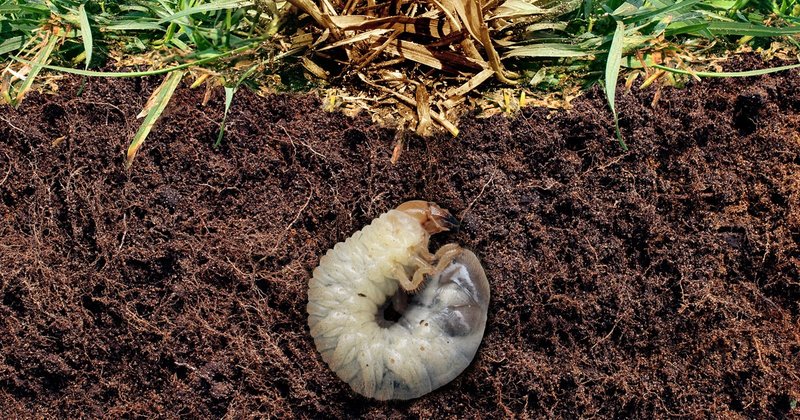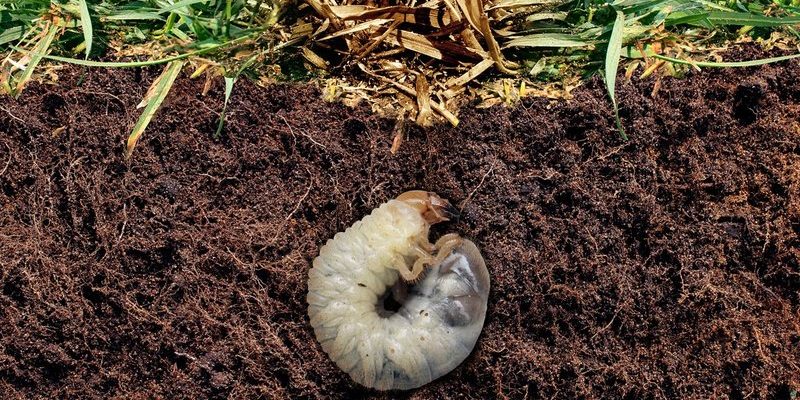
Timing is crucial when it comes to grub control. If you apply treatments too early or too late, you might not see the results you’re hoping for. Think of it as trying to catch a bus: if you arrive too early, you’re just standing around, and if you arrive too late, you’ve missed your ride. In this article, we’ll explore the best times for applying grub control treatments, the types of treatments available, and how to ensure your lawn stays healthy and lush.
Understanding Grubs and Their Life Cycle
To tackle grubs effectively, it’s helpful to know a bit about their life cycle. Grubs typically start out as eggs laid by adult beetles during the summer. These eggs hatch into larvae in late summer and fall, which is the stage when they become most destructive. As they munch on your grass roots, the lawn can start to turn brown and die.
You might be wondering when you should be on the lookout for these pesky critters. Well, the most destructive time for grubs is from late summer through early fall. That’s when they’re feeding most actively and can cause the most damage. By understanding their life cycle, you can better time your treatments and keep your lawn looking its best.
Best Timing for Application of Grub Control
The most effective time to apply grub control treatments is in late spring or early summer. This is often when the adult beetles emerge and lay their eggs. By applying your treatment during this window, you can prevent those eggs from maturing into damaging grubs. Think of it as blocking a goal in soccer before the ball even gets to the net.
Here are a few key points to keep in mind for your timing:
- Late Spring (May to June): This is the ideal time for preventive treatments.
- Summer (July): If you’ve missed the spring window, applying a curative treatment can help manage existing grubs.
- Early Fall (August to September): This is also a good time to check your lawn for any signs of grub damage.
By keeping these timelines in mind, you’ll maximize your chances of keeping grubs at bay!
Types of Grub Control Treatments
When it comes to grub control, you have a few options. Most treatments fall into two categories: preventive and curative.
Preventive treatments are typically applied before the grubs hatch. They’re designed to keep larvae from developing. These are the ideal option if you want to maintain a healthy lawn. Some common preventive treatments include products containing **imidacloprid** or **chlorantraniliprole**. These can be applied as granules or liquids and are usually effective for several months.
On the other hand, curative treatments are best used if you’ve already spotted grubs munching away at your lawn. These treatments often contain different active ingredients, like **trichlorfon** or **carbaryl**. They work quickly to kill existing grubs but must be applied early enough in the season to be effective.
Choosing the Right Grub Control Treatment
Choosing the right treatment can feel overwhelming, but it doesn’t have to be. Think about your situation—do you have a history of grub problems? If so, going for a preventive treatment is probably your best bet. If you’re just seeing signs of damage, a curative treatment could do the trick.
Also, consider the type of lawn you have. Some treatments may not be safe for use around pets or gardens. Always read the label and, if in doubt, consult a local expert to ensure you’re making the best choice for your lawn and your family.
Application Tips for Best Results
Applying grub control treatments is straightforward, but there are a few tips to keep in mind for the best results. First, always apply treatments when the grass is dry. If you apply them when it’s wet, the product can wash away, reducing its effectiveness.
Here’s a quick breakdown of how to successfully apply your grub control:
1. **Read the Instructions:** Each product has specific instructions for application. Following these can mean the difference between a lush lawn and a patchy one.
2. **Even Distribution:** Use a spreader for granules to ensure the product is evenly distributed. Overlaps can lead to burnt spots, while gaps can leave areas unprotected.
3. **Water It In:** After application, water the lawn lightly to help the product penetrate the soil. This can ensure it gets to the grubs before they damage your grass.
By following these tips, you’ll set yourself up for success in controlling grubs.
Monitoring Your Lawn After Treatment
Once you’ve applied your grub control treatment, it’s important to monitor your lawn. Check for any signs of grubs over the next few weeks. You might notice spots where grass is still struggling to bounce back, which could indicate that the treatment wasn’t fully effective.
Here’s how to keep an eye on things:
- Look for Brown Patches: These can indicate that grubs are still present.
- Check Soil: If you suspect grubs, dig up a small section of turf and check for white, C-shaped larvae.
- Keep an Eye on Local Beetles: If you notice an influx of adult beetles, it might be time to plan for your next preventive treatment.
Being vigilant and proactive can help you catch any problems before they escalate.
Common Mistakes to Avoid
Even the best of us can make mistakes when it comes to lawn care. Here are some common pitfalls to avoid when it comes to grub control:
1. **Waiting Too Long:** If you see signs of grub activity, don’t wait. Apply curative treatments as soon as possible to prevent further damage.
2. **Applying at the Wrong Time:** Timing is everything. If you apply treatments outside the recommended windows, you might not see the results you want.
3. **Not Following Instructions:** Each product is designed to work in specific conditions. Ignoring the guidelines can lead to ineffective treatment.
Avoiding these mistakes can definitely increase your chances of a healthy, thriving lawn!
Applying grub control treatments effectively can be a game-changer for maintaining a lush and green lawn. Remember to time your applications in late spring or early summer for the best results. Understanding the types of treatments available and monitoring your lawn afterward will help ensure that grubs don’t stand a chance.
Your lawn is an extension of your home, and taking care of it can be incredibly rewarding. So grab your treatment of choice, follow the tips we’ve discussed, and get ready to enjoy a healthy, vibrant lawn all season long! Cheers to your lawn’s health!

